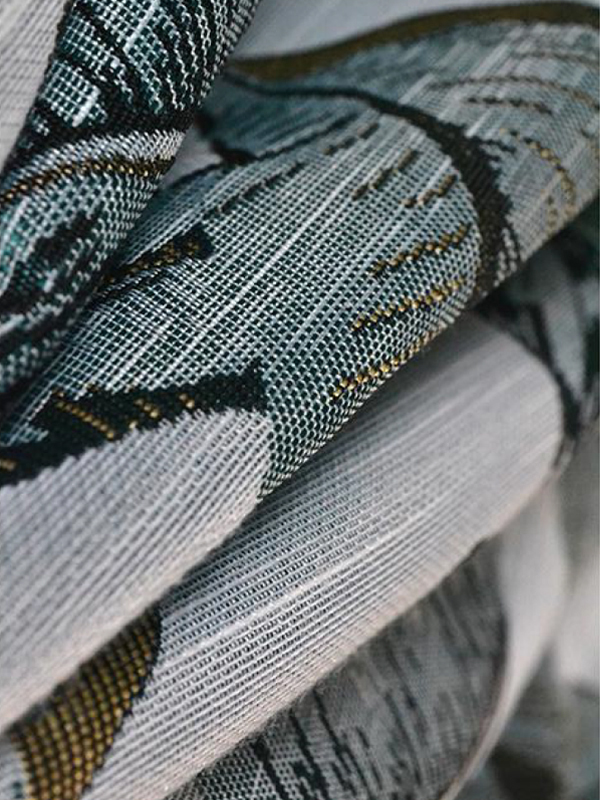As an indispensable soft furnishing element in the home space, curtains have long been more than just shading and privacy protection. They are also an important carrier for style creation and aesthetic expression. The core that supports all this is curtain fabric. From fabric texture to pattern design, from functionality to environmental protection, the development of curtain fabrics carries the multiple evolutions of fashion, aesthetics and lifestyle.
There are many types of curtain fabrics, which can be roughly divided into the following categories according to the material:
Cotton and linen fabrics
Good air permeability, natural feel, suitable for creating a comfortable, warm and literary home atmosphere. The disadvantage is that it is easy to wrinkle and the shading property is relatively weak.

Polyester fiber (polyester) fabric
Durable, sun-resistant, and not easy to deform, it is the most used curtain material in the market. A variety of textures and functions can be achieved through different weaving processes.
Silk fabrics
Lightweight, silky, and shiny, with a noble and elegant visual effect, it is often used in European and light luxury style spaces.
Velvet/flannel fabric
Thick texture, excellent drape, good shading and heat preservation effects, suitable for autumn and winter seasons and rooms that need stronger shielding.
Blended fabric
Combines the advantages of multiple materials, such as cotton + polyester, linen + polyester, etc., to achieve a balance between durability, aesthetics and price.
As people's requirements for quality of life increase, the functionality of curtain fabrics is also constantly enhanced:
Shading: High shading fabrics can reach more than 90%, effectively blocking strong light and improving sleep quality;
Heat insulation: multi-layer structure or thick material can insulate in summer and keep warm in winter;
Sound insulation and noise reduction: Thickened flannel or flocking curtains have a certain noise reduction effect;
Flame retardant and antibacterial: Fabrics used in hotels, hospitals and other places need to have special functional treatment;
Easy to clean and antistatic: Most modern fabrics use nano-coating or dust-proof technology, which is convenient for daily care.
Modern minimalist style: It is recommended to choose polyester fabrics with solid colors or geometric patterns, and match them with light gauze curtains to look refreshing and neat;
Nordic style: Cotton and linen fabrics are the first choice, and light gray, beige, and wood colors are more natural when matched with log furniture;
Light luxury European style: Velvet or jacquard fabrics, paired with exquisite lace or tassels, instantly enhance the style of the space;
Children's room/creative space: It is recommended to choose fabrics with bright colors, lively prints, soft materials and environmental protection.
Environmentally friendly and sustainable: Recyclable polyester, natural organic cotton, and non-toxic dyes are used to meet the concept of green home;
Smart curtain compatibility: The fabric must be compatible with the smart track system and have good stretch and wear resistance;
Digital printing and customization: Personalized patterns and customized designs will become the new favorites of young consumers;
Functional composite materials: such as double-layer fabrics, shading + heat insulation + UV protection three-in-one design, etc., will gradually become popular.
Curtain fabrics are not just a piece of cloth, they represent the extension of space temperament, resident aesthetics and lifestyle. When choosing curtain fabrics, we should consider their functionality and practicality, as well as the overall home style and personal taste. In the future, with the continuous advancement of material technology and the diversification of consumer demand, curtain fabrics will release more possibilities and excitement in the field of home furnishings.

 English
English 中文简体
中文简体 Español
Español عربى
عربى












